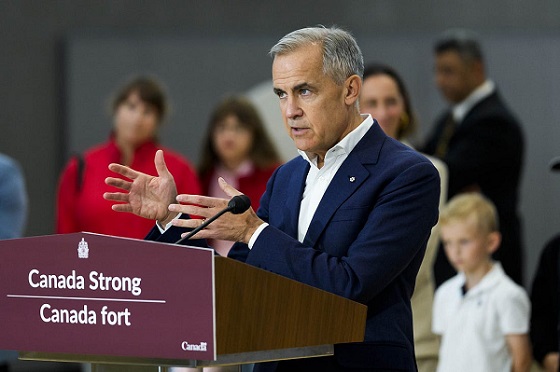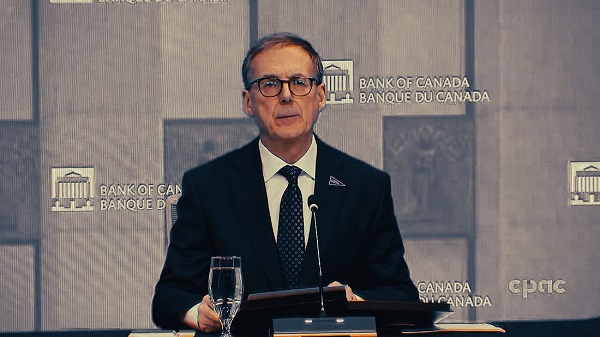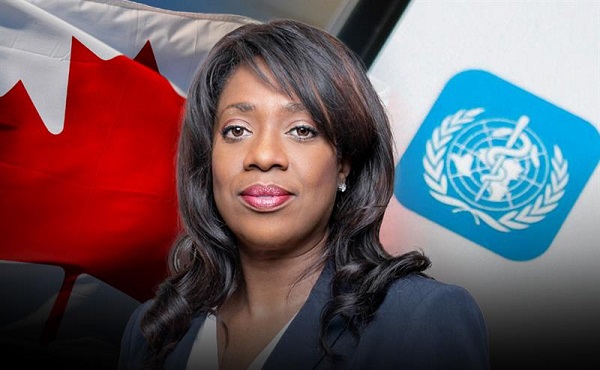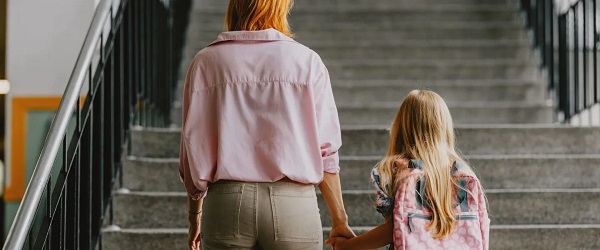Opinion
Election 2017, Advance Polls open this Saturday. North/South inequality a surprise to some but not all.

The big issue facing the candidates in a multitude of ways is the North/South inequality in regards to investment, education, recreation, youth, air quality to name but a few. Some show doubts but will let me know that I was right.
I found out that 31% of the population of Red Deer live north of the river. A number that is significant because in 1985 40% lived north of the river.
Years ago the north side residents voted for a slate of north side candidates. We have 8 councillors and 1 mayor so we should have 3 members from the north but for many years we have had only 1, Frank Wong.
31% of the residents represent only 17.6% of the candidates.
Candidates living north of the river are:
Mayor: Sean Burke,
Councillors: Jason Habuza, Kris Maciborsky, Vesna Higham, Frank Wong, Sandra Bergeron, Matt Chapin, Bobbi McCoy
Public School Board: Bev Manning, Matt Chapin
Separate School Board; No Name.
Now if none of these names draw your fancy you might consider Tanya Handley which supports building the Aquatic Centre north of 11A to kick start development.
Michael Dawe for acknowledging the issue and putting their plight into words.
I cannot give a true picture of all 51 candidates. If we were a big city and was broken into 4 wards it would be easier to know your candidates and they would be more aware of the issues.
I am always surprised when candidates and even local residents are amazed after being apprised of the following information. They are not secrets, they are widely known in national news stories, human interest articles and polls, and used in marketing tools by other cities and corporations.
Remember 31% of Red Deer’s residents live north of the river and they have the G.H.Dawe Community Centre developed in the 70s and built in the 80s.
Two thirds of Red Deer’s residents live south of the river and they have the Downtown Recreation Centre, Michener Aquatic Centre, Downtown Arena, Centrium, Collicutt Recreation Centre, Pidherney Curling Centre, Kinex Arena, Kinsmen Community Arenas, Red Deer Curling Centre, and the under-construction Gary W. Harris Centre. The city is also talking about replacing the downtown recreation centre with an expanded 50m pool. Tanya Handley says she will not support this as she thinks it should be built north of 11a.
North of 11a. Thousands of acres up for development, and a 100 acre lake.
I have been talking about Hazlett Lake. Red Deer’s largest lake, located north of the river, north of Hwy 11a because it is up for development. It is a diamond in the rough, with potential that is being ignored at our cost. Lethbridge turned a slough into a lake becoming Henderson Park, a tourist attraction and they were the 5th fastest growing city in Canada, and they are only slightly smaller than Red Deer now and could overtake Red Deer this year.
Red Deer has a lake that the current council wants to wrap with residential and industrial land. The city wants to spend a cool hundred million turning the downtown recreation centre into an aquatic centre. Why not build an Aquatic Centre on a lake? Highly visible from Hwy 2.
The Gary W. Harris centre will be visible from Hwy 2, as is the sports Hall of Fame, as is Hazlett Lake.
If Lethbridge can turn a slough into a tourist attraction why can’t Red Deer turn a lake into a tourist attraction.
Hazlett Lake is about the same distance from the Riverlands development as the Collicutt Centre is from the Riverlands.
The Collicutt Centre came about because the city decided that with 55,000 residents the city needed a 4th recreational centre. It also spurred development in the south east and now 60% of the residents use it.
The development north of 11a would bring the total population north of the river to 55,000 (if we stop the exodus of residents,) but there are no plans for a 2nd recreation centre let alone a 4th north of the river.
There is also no plan, no discussion to stem the outward migration in Red Deer. I sense that the bias against the north is so deep, so entrenched that they do not worry about it.
Lethbridge and Red Deer have similar size population in the same province. Lethbridge is the 5th fastest growing city in Canada and grew by almost 2% per year, while Red Deer shrank by 1% last year.
Lethbridge took a man made slough and turned it into a multi-faceted tourist attraction, while Red Deer will turn a lake into a residential subdivision.
So why I am I suggesting Lethbridge turned lead into gold and Red Deer might be turning gold into lead. Let us look at what Lethbridge did with a man-made slough then look at what Red Deer will do with a lake.
Henderson Lake Park Henderson Lake Park is one of Lethbridge’s premier parks featuring a 24 hectare (59 acre)man made lake, mature trees and groves, gardens, picnic shelters, playgrounds and over 7 km of trails.
Whether you’re a family with small children, an exercise or sports enthusiast, a non-motorized boating enthusiast, a fisherman, a horticulturists, or someone simply looking to get out for a walk this park is definitely for you.
The lake is perfect for kayaks, canoes and paddle boats alike and provides easy access to the water via the boat launch and dock. The dock is often used by fishermen looking to catch Pike, Perch or Whitefish (provincial fishing regulations apply).
For the nature, exercise, and history enthusiasts there is a 2.5 km trail around the lake and another 4.3 km trail around the perimeter of the park providing ample opportunity for one to stretch their legs, check out all of the local wildlife, or view the commemorative and historical markers and displays located throughout the park. There are also great little areas for you to put down a blanket and enjoy a good book, have a picnic or simply relax and watch the world as it goes by.
Henderson Park is also home to the Demonstration and Rose Gardens. The Rose Garden is located in the northwest corner of the park and commemorates 9/11. The Demonstration Gardens are located east of the Tennis Courts and celebrates the contributions of Communities in Bloom to the Community.
Henderson Park is surrounded by a multitude of facilities like the SLP Skate Park, Henderson Horseshoe Pits, the Henderson Lake Golf Course, the Henderson Outdoor Pool, Spitz Stadium, Henderson Park Ice Centre, Henderson Tennis Courts and Nikka Yuko Japanese Garden.
Henderson Park has something to offer absolutely everyone and there isn’t a day where you won’t see families, exercise enthusiasts, seniors, people out exercising their dogs, fishermen, boaters, golfers, and just about everyone else under the sun out enjoying this wonderful park. From the photographic opportunities to the areas for quiet solitude and reflection to the exuberant playgrounds, to the trail system that is linked to the rest of the south side, this park is sure to meet everyone’s needs.
Hazlett Lake Park?
Remember, Hazlett Lake is a natural lake that covers a surface area of 0.45 km2 (0.17 mi2), has an average depth of 3 meters (10 feet). Hazlett Lake has a total shore line of 4 kilometers (2 miles). It is 44 Ha. (108.8 acres) in size. Located in the north-west sector of Red Deer.
Currently on the NADG.com website we will see a residential community around Hazlett Lake. Encompassing about 12 percent of the land north of 11A currently up for development. Phase I will be home to 5,000 residents with the nearest high school on the other side of city on the east end. A K-8 school site to be located north-east of Hazlett Lake currently planned for a later phase.
On nadg.com:
“Hazlett Lake is a 350-acre master planned residential community located in North Red Deer at the intersection of Alberta’s busiest Highway -QE2 and Highway 11A. The community will consist of over 2000 new residential units and will be Phase 1 of Red Deer’s North of 11A Major Area Structural Plan. Additionally, this development will be the first new housing project in North Red Deer in 10 years”
Red Deer also wants to build an Aquatic Centre, and the current plan is to demolish the downtown rec centre and build it there. The Collicutt Centre was built in the south east corner of Red Deer, helped to kick start development. Why not build the Aquatic Centre in the north west corner, kick starting development and build it on Hazlett Lake and create a tourist industry?
An Aquatic Centre on a lake, ludicrous right? A tourist destination highly visible to one of the busiest highways in Canada, insane right? 2 miles of shoreline may have room for a beach, impossible right? The current plans in Red Deer indicates some trails, a small community building with some historical placards, possibly a bathroom and a playground.
Not quite Henderson Lake Park, tourist attraction, is it?
To me Red Deer has a gold mine of an opportunity that will be ignored at the expense of the citizens of Red Deer. Do you agree?
Johnstone Park, saw their planned school go to Inlewood. The city said the neighbourhood was not developed enough for a school, as compared to our new high school sitting in an empty neighbourhood.
Recently, the province stepped up and provided funding for the expansion on St. Patrick’s school in Highland Green, just north of the river. The school’s enrolment was 30% over capacity, a kindergarten class was being taught in a hallway, and students and families were paying the price.
There has not been a school built north of the river since 1985, perhaps that could explain why some schools are at 130% capacity and classes are held in hallways. There is no high schools north of the river, even though up to 40% of the population resided there. Could be why 777 more residents moved out of the north side and out of the city than moved into the area. Remember there are 4 high schools south of the river with 2 more planned. There are no high schools planned for the north side of the river even with thousands of acres north of 11a coming up for development and 25,000 more residents planned.
The Ministry of Education says they follow the direction of the local school boards.
What do the school board trustees, past and present have to say?
Public School Board incumbent and candidate, Dianne Macaulay had this to say;
“We have a variety of measures that can help the board determine growth in our schools. One is a system our district has been using for years call Baragard. This projects population demographics to help us determine possible new boundary’s when schools become full or when we are submitting our three year capital plan to the government for new schools needed. I can only answer your question regarding the building of schools.
The city is ultimately responsible for the placement of development including schools.
Some green spaces will have a sign indicating “This is a potential site of a public or separate school”. This can give people that are thinking about moving into that neighbourhood a heads up . But it doesn’t mean a school WILL be built.
Our latest school Don Campbell was needed but the government only gave us 3 month to determine a site. The city will not allow a school to be built unless the surrounding area is developed. So even thou a school may have been better off in another location , we only had sites on that end of the city that were currently developed
Lets talk about about the current high school project.
This was a massive joint project between Red Deer Public , Red Deer Catholic, the Francophone district and the city. The original plan was to build a joint use high school for all 3 boards. This would be a one of kind in Alberta and a large amount of space was needed for this so the city choose where it had the most to give at the time. Over 14 months of planning went into this and in the end the Bishop vetoed it because Alberta Catholic School Trustee Associations Convenant indicating their belief in how having Catholic and non catholic students together will take away from their Catholic teachings.
So now we have this huge area where will just be 2 or 3 different buildings. This has not saved tax payers one cent! I guess to sum up Garfield , we do look at the population growth and we try to build where the students will be. But sometimes our hands are tied.”
Angela Sommers, a Public School Board candidate says one of the biggest issues is the north/south inequality across schools, “just being north of the river, you can see there’s very little money for the students in the north.” Red Deer Advocate September 28 2017.
Advance polls open on Saturday, September 30, so I am offering you something to remember.
National
Watchdog Presses Ottawa to Release Hidden Lobbying Rulings

With nine cases still undisclosed and a reappointment controversy surrounding the Lobbying Commissioner, the group warns that federal enforcement of ethics laws is losing public trust
More than a year has passed. Ten separate lobbying violations. Nine of them returned by the RCMP without prosecution. Zero public rulings. And a Commissioner who was quietly re-appointed for another seven-year term by the Trudeau regime.
What am I describing? A third-world dictatorship? Nope. Welcome to Ottawa—where democracy dies behind closed doors, and corporate lobbyists write the laws under the table.
Today, Democracy Watch, the last half-functioning watchdog in this country, blew the whistle. Again. They released a bombshell press release accusing Nancy Bélanger, Trudeau’s handpicked Lobbying Commissioner, of hiding her rulings on serious violations of the Lobbying Act. These aren’t minor infractions. We’re talking about shady dealings by major players: Facebook, WE Charity, SNC-Lavalin, and Imperial Oil—names you may remember from past scandals the media tried to memory-hole.
The facts are simple. Democracy Watch filed official requests to get these rulings. The RCMP, under Trudeau’s appointees, delayed disclosure for two years. Bélanger’s office extended its own deadline, then just… never released them. That’s illegal, by the way. But when the Liberals are in charge, the law doesn’t apply to them—only to you.
Now, why would they bury these reports? Well, ask yourself: who benefits?
Start with Facebook. Back in 2018, Kevin Chan—their top Canadian fixer—was caught giving “advice” to Cabinet ministers while failing to register as a lobbyist. Not exactly subtle. Then there’s WE Charity, Trudeau’s favorite shell organization for funneling money to friends and family. They handed out luxury trips to Bill Morneau’s family. Did they face charges? Nope. SNC-Lavalin—remember them? The company Trudeau went to the mat for in 2019, firing his own Attorney General to protect. And Imperial Oil? They lobbied Andrew Scheer and Karina Gould at a corporate event they sponsored. Nothing to see here, folks.
Here’s the question no journalist in Ottawa will ask: Did Nancy Bélanger bury these rulings in exchange for her reappointment last December? Did she gut the Lobbyists’ Code of Conduct, water down the rules, and turn a blind eye to violations just to keep her job? It’s not a conspiracy theory—it’s an obvious incentive. And it stinks.
Democracy Watch co-founder Duff Conacher was blunt: “By continuing to hide her rulings on nine lobbying violations, Commissioner Bélanger is covering up scandalous situations, protecting the lobbyists and politicians and public officials they were lobbying.”
That’s the polite version.
The real version? The Trudeau Liberal regime—and yes, we’re still calling it the Trudeau regime even with Mark Carney as his bland globalist replacement—is corrupt to its core. This is a government that protects its friends, buries oversight, and weaponizes institutions like the RCMP and the Office of the Lobbying Commissioner to silence dissent and cover up for insiders.
Just look at the pattern:
- RCMP Commissioner Brenda Lucki was Trudeau’s puppet.
- Her successor, Michael Duheme, was appointed after the RCMP “let off” the lobbyists.
- Bélanger, who failed to disclose 10 rulings, gets another 7 years in power.
Coincidence? Please.
Eighty percent of Canadians—across the spectrum—say they’re concerned about unethical lobbying. And they should be. Because what we’re seeing isn’t just a few bad actors. It’s institutionalized corruption. And worse—it’s bipartisan silence. Where is the outrage? Where is the mainstream press? They’re too busy fact-checking memes and writing hit pieces on Pierre Poilievre to ask why the Lobbying Act has been turned into toilet paper.
The Liberal swamp didn’t get drained. It got deeper. And if you think electing a new face like Mark Carney will change anything, think again.
Carney was Trudeau’s right-hand globalist — a man who cut his teeth at Goldman Sachs, then went on to run both the Bank of Canada and the Bank of England. He didn’t come back to serve Canadians — he came to manage them, like assets on a spreadsheet. He now rules Ottawa like a boardroom, where accountability is a nuisance and democracy is a branding exercise.
The Liberal swamp didn’t get drained. It got deeper. And if you think electing a new face like Mark Carney will change anything, think again.
Lets be clear: What this country needs isn’t another bureaucratic shuffle. We need a reckoning. We need real transparency. And we need to dismantle the corrupt machinery that allows lobbyists, politicians, and unaccountable commissioners to play god behind closed doors.
This isn’t about left or right. This is about the survival of Canadian democracy.
Because right now, it’s being auctioned off—one lobbying meeting at a time.
Opinion
Bill Gates Shakes Up the Climate Discussion

Bill Gates’ new climate letter made some people angry and others happy. Everyone has an opinion. Today I share mine. Image: Grok.
 The Honest Broker
The Honest Broker
It is not just his three truths, but the fact that he said them out loud
Wednesday, in his periodic letter to the world, Bill Gates shared three truths about climate change — and shook up the climate discussion. While the longer term implications of his letter are uncertain, early signs are that Gates has injected a welcome dose of climate realism into the discussion.
Here are his three truths (and I encourage everyone to read his whole letter):
- Climate change is a serious problem, but it will not be the end of civilization;
- Temperature is not the best way to measure our progress on climate;
- Health and prosperity are the best defense against climate change.
For most THB readers, these truths will be well understood, even common sense, and will seem neither shocking nor scandalous.
But for some steeped in climate advocacy grounded in visions of “existential threat” or a looming apocalypse, Gates’ truths have rocked their world.
Some examples from the activist media:
- CNN: “a stunning claim”;
- Politico: “soft pedals climate”;
- Axios: “escalates debate with scientists”;
- The New Republic: “we shouldn’t be listening to people like him”
Activist climate scientists joined their fellow-traveling media critics, criticizing the substance of Gates’ letter or expressing concerns that their political enemies might welcome it — Here are a few examples:
- Michael Mann: “This is horrifying . . . [climate change] represents an existential threat, exacerbating global security threats, threatening water and food supplies, leading to massive damage. . . it’s like a game of soft climate denial bingo”;
- Jonathan Foley: “I stopped listening to Bill Gates years ago. You should stop too”;
- Michael Oppenheimer: “{h]is words are bound to be misused by those who would like nothing more than to destroy efforts to deal with climate change.”
Of course, at the other end of the spectrum, there is President Donald Trump, who posted the following, which is just as over-the-top as the reactions from climate activists:
Just like the climate activists, President Trump is treating the letter as an ink blot for political messaging, rather than on its own merits.
I suspect the president does not agree with this statement by Gates:
“Climate change is a very important problem. It needs to be solved, along with other problems like malaria and malnutrition.”
From my perspective, Gates’ letter is a welcome contribution to a growing chorus of climate realism and energy pragmatism.
I’ve been asked by several people if I think Gates reads THB or my work — I doubt it, or else he wouldn’t have made a big mistake in his letter suggesting that extreme climate scenarios are today implausible due to climate policy successes. They are implausible because they were always wrong about coal.
I’ve never met Gates, but Bill should definately read THB!
Yesterday, as I settled into my seat for the flight back from Florida (where I spoke at New College) I was invited on very short notice to write an op-ed for the NY Post on Gates letter. I wrote it on the plane and sent it in somewhere over Oklahoma.
I reproduce the op-ed in full below. You can read it at the NY Post site here.
Why Bill Gates turned on the alarmists, and decided climate change isn’t the apocalypse (NYP title)
Earlier this week, Microsoft co-founder and billionaire philanthropist Bill Gates dropped a truth bomb into the discussion of climate and energy policy. His missive sent the climate lobby into a tizzy as he joined a growing chorus of voices aligned with today’s science and policy consensus on climate.
Gates actually shared three truth bombs, and let’s take a look at each.
Truth #1: Climate change is a serious problem, but it will not be the end of civilization
Here Gates recognizes that the most extreme projections of future climate change have been dialed back considerably over the past decade. Gates explains correctly, “the current consensus is that by 2100 the Earth’s average temperature will probably be between 2°C and 3°C higher than it was in 1850.”
This consensus has rapidly emerged not because the world has rapidly reduced emissions (as Gates incorrectly asserts), but rather because scientists have recognized that those extreme scenarios that have dominated climate research and policy were actually off target from the start.
Specifically, in work pioneered by my colleague Justin Ritchie of the University of British Columbia almost a decade ago, we now know that the previous generation of climate scenarios foresaw a world rushing headlong into coal energy to power the world.
Coal is the most carbon-intensive fossil fuel and a global energy system dominated by coal would indeed have had massive emissions with correspondingly largest effects on climate.
In reality, rather than in models, our research shows the world is not rushing into coal and the scenarios that projected as much as a six-fold increase in coal consumption are already implausible. The real world has already departed substantially from these projections.
In recent years, projected global temperature increases to 2100 have been successively revised downwards. Earlier this month the Norwegian group DNV issued its “most likely” projection for global temperatures this century to be a 2.2C increase and achievement of net-zero emissions by the 2090s.
These achievements would not hit the targets of the 2015 Paris Agreement under the U.N Framework Convention on Climate Change, but they are far from a global existential threat, according to the projections of the Intergovernmental Panel on Climate Change.
The new consensus is so robust that those taking Gates to task on this point might be considered today’s new climate deniers.
Truth #2: Temperature is not the best way to measure our progress on climate
For many, Gates assertion would appear obvious. He explains, “the global temperature doesn’t tell us anything about the quality of people’s lives.”
Consider the remarkable progress made over the past 150 years with respect to the human impact of extreme weather events.
Way back in the 1870s — when global temperature were supposedly ideal — approximately 50 million people died globally related to extreme weather, particularly related to an extreme El Nino event of 1877-88.
The 1870s also saw the Great Midwest Wildfires of 1871 which killed as many as 2,400 people, the massive 1872 Baltic Sea flood, a 1875 midwestern locust swam of an estimated 12.5 trillion locusts, the 1878 China typhoon that killed as many as 100,000 people, and the U.S. experienced 6 landfalling major hurricanes in the 1870s, compared to just 3 in the 2010s.
It is not widely appreciated, but 2025 (still with two months to go), is currently on track for the lowest global death toll from extreme weather in all of human history. Part of that is good fortune to be sure — for instance, the Northern Hemisphere is well below average in terms of tropical cyclone activity.
However, 2025 fits a remarkable long-term trend of lives improving due to advance in the applications of science and technology in preparing for disasters, coupled with the consequences of sustained economic growth around the world.
Sustaining that track record will take concentrated effort, but there is no reason that the human condition cannot continue to dramatically improve this century even as temperatures warm another degree or so.
Truth #3: Health and prosperity are the best defense against climate change
To understand this claim, there is no need to look at futures in computer models, one just needs to look at the world as it is today.
Think about it. Would you feel more protected against the vagaries of climate variability and change if you lived in one of the world’s poorest countries or one of its richest?
Now imagine if everyone around the world enjoyed the economic and technological advantages of the United States. Of course resiliency to changes in climate would be much greater if everyone around the world were as wealthy as those of us in the United States. As Gates observes: “Development doesn’t depend on helping people adapt to a warmer climate — development is adaptation.”
Gates includes what might have been a fourth truth, and one we should not forget: “Climate change is a very important problem. It needs to be solved, along with other problems like malaria and malnutrition.”
Understanding the true nature of a problem is a key first step in effectively addressing it. Climate change is indeed real, but it is not the apocalypse.
Comments welcomed! Please keep them on subject and as usual, no comments of a personal nature about anyone, thanks!
Before you go — If you think that we are making progess on climate realism and energy pragmatism and would like to see even more, then please click that “ Like” to let everyone know. More likes mean that THB rises in the Substack algorithm and gets in front of more readers. More readers mean that THB reaches more people in more places, broadening understandings and discussions of complex issues where science meets politics. Thanks!
Like” to let everyone know. More likes mean that THB rises in the Substack algorithm and gets in front of more readers. More readers mean that THB reaches more people in more places, broadening understandings and discussions of complex issues where science meets politics. Thanks!
For the full experience, upgrade your subscription.
-

 Business2 days ago
Business2 days agoCanada heading into economic turbulence: The USMCA is finished and Canadian elbows may have started the real fight
-

 Internet2 days ago
Internet2 days agoMusk launches Grokipedia to break Wikipedia’s information monopoly
-

 Business2 days ago
Business2 days agoBill Gates walks away from the climate cult
-

 National1 day ago
National1 day agoCanadian MPs order ethics investigation into Mark Carney’s corporate interests
-

 National1 day ago
National1 day agoCanada’s NDP is now calling women ‘non-males’
-

 Business2 days ago
Business2 days agoFord’s Liquor War Trades Economic Freedom For Political Theatre
-

 Banks2 days ago
Banks2 days agoBank of Canada Cuts Rates to 2.25%, Warns of Structural Economic Damage
-

 Health2 days ago
Health2 days agoLeslyn Lewis urges Canadians to fight WHO pandemic treaty before it’s legally binding











